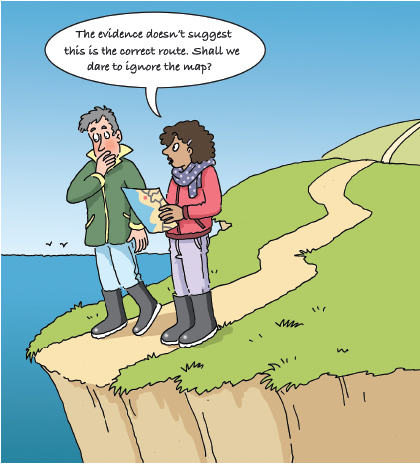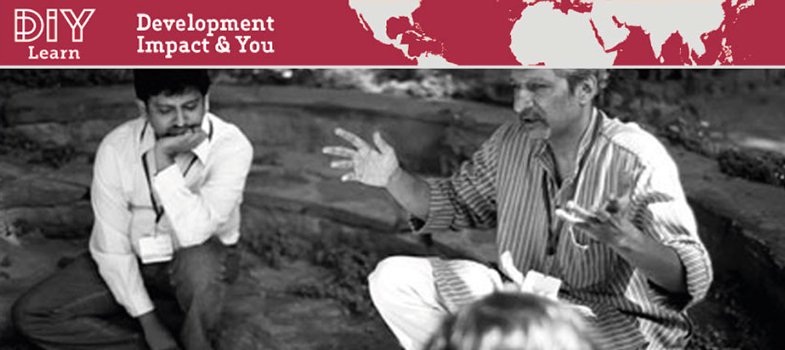1 What is evidence planning? When would you use it?
The Evidence Planning Tool is a simple framework that helps you to define, share and improve what you are trying to do. By making you think more broadly about your work’s effect on target beneficiaries, society, other activities and organisations, evidence planning helps you construct an evidence-based case for the impact you want to have.
The tool is valuable because it can help you determine whether there are alternative approaches or processes that will enable you to realise your goal more effectively. Such reflection can build confidence that you are having the desired impact and achieving it efficiently.
You might use the tool as part of ongoing monitoring and evaluation of a project or programme, or because you feel that engaging with the assumptions and evidence will help focus your approach.
The tool can also be used if you think that the way you are working is outdated or not fit for purpose. This was why Tarun, the Education Director of the Teemac Project, decided to use the tool, as explained in Case Study 1. (You can read the full case study about Tarun’s Teemac project on page 15 of the DIY Toolkit [Tip: hold Ctrl and click a link to open it in a new tab. (Hide tip)] .)
Case Study 1: Introducing Teemac
Teemac works with educational institutions, creating products to help them modernise practices through an enterprise resource planning (ERP) platform called Curiosity.
The problem
Tarun says:
We are currently working on a feature called Amphitheater which connects college students to extra-curricular activities and events happening in their college. Right now most of the institutions we work with have an ‘age-old’ bulletin board with ad-hoc, outdated information and no one point where students or college admin can access or update information.
Why the tool was used
Tarun says:
We had realised that we are very idealistic when it comes to building features within the Curiosity platform. We usually follow our gut instinct, even when the institutions do not see an explicit value in them. For a change, we thought we would adopt a more evidence-based approach before we start building the Amphitheater feature.
We used a combination of problem definition (see page 40 of the DIY Toolkit) and evidence planning. This was to both define and create a logical evidence based plan for the problem we are trying to solve.
So, the Evidence Planning Tool can be used to shake things up, and reawaken a creative approach to problem solving, as represented comically in Figure 1.

Activity 1
Reflect on:
- the key focus of a project, organisation or business you are working with at the moment
- the approach taken to realise it.
Do you feel this is the best approach? If not, why?
Discussion
It probably isn’t difficult for any of us to think of things that we, our organisation or business could do differently to achieve better outcomes. Critiquing an approach is easier than identifying why that approach is followed. To understand the latter, we need to engage with the evidence base for the approach.
Evidence Planning
